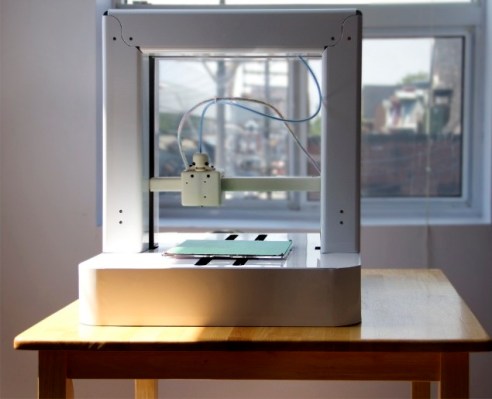The maker movement is on the cusp of a boom. They’re job-creating world changers, on the verge of thoroughly disrupting everything from crafts to consumer electronics to, heck, well, everything, by democratizing manufacturing.
Makerbot has released their Replicator 2. Form 1 sought to Kickstart $100,000 for their professional 3D printer; they’re at $1.5 million and counting. Panda Robotics just launched a Kickstarter for their open-source PandaBot printer. The authorities are cracking down on 3D-printed guns. John Biggs argues that home 3D printing is killing the manufacturing industry.
Oh, I agree that 3D printing will be a serious threat to manufacturing as we know it. But not at home. That doesn’t make sense. Instead, we’ll have two kinds of communal 3D printer shops.
In high-infrastructure areas, there’ll be a clutch of online providers a la Stratasys (and I expect one of them to be Amazon.com): you’ll pick your 3D design from a huge online menu, send them size information and maybe a few photos from some kind of cunningly designed app, tweak the 3D preview until you’re happy, and they’ll print it out in some vast warehouse full of high-end high-speed 3D printers and ship it to you, possibly that same day.
In low-infrastructure areas, or if you’re a casual hobbyist, or if you have very specific requirements, you’ll head down the road to your nearest local printing facility. Depending on where you are, maybe this is tomorrow’s TechShop, maybe it’s a cluster of converted shipping containers on the outskirts of Uganda each with their own specialties and strengths. They’ll customize your order, render it in the cloud as needed, print it out, and tweak and iterate until it’s done. More expensive but more specific.
(Nomenclature note: Until recently, I would have used “developed world” and “developing world” rather than “high-infrastructure” and “low-infrastructure.” However, now that the vast majority of the world’s poorest people do not live in poor countries, I’m not sure the first two phrases are meaningful any more.)
But you won’t see many home printers outside of passionate artists/hobbyists and home manufacturing businesses. At least not for a very long while. It just doesn’t make economic sense.
Do I sound like a skeptic? Not at all; I’m an idealist. I’m saying that custom 3D printing is going to be too important to be a home-hobbyist endeavour: instead it will explode from a hacker novelty to a fundamental part of our collective economic infrastructure. In the high-infrastructure world, this will provide new economic efficiencies, open up new market segments, and create a scaffolding for a lot of elaborate and fantastic new art. In the low-infrastructure poor world, though, it’s going to be a lot more important than that. There I think it might be something akin to an economic revolution. Yes, another one. Buckle your seat belts: it’s going to be an interesting decade.
(In slightly related news, I’ll be filing tech dispatches from Cambodia, Thailand, and hopefully Burma over the next few weeks. Don’t touch that dial.)
Image credit: Panda Robotics’ PandaBot.
